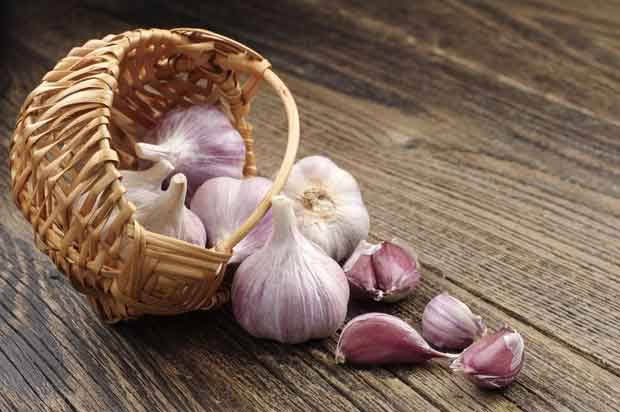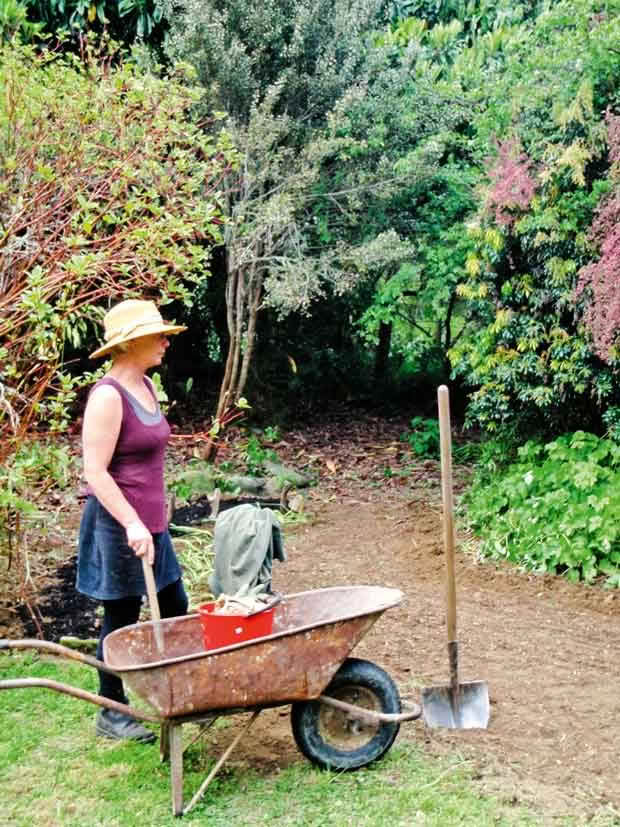What to do in the garden in June

Plant garlic and yams this month
It’s time to apply some love to your soil and prepare for spring.
Words: Jane Bellerby
As winter bites up and down the country and we celebrate Winter Solstice and Matariki, there is preparation work going on with next spring and summer in mind. It’s the usual gardening thing of working up to three months ahead of a season in both edible and decorative areas.
I know there will be times of wild weather when it’s not that great being outside settling stock into sheltered places, propping up tumbled gardens or just getting through the daily chores but there is the welcome warmth of the house with soup or a vegetable curry on the stove to motivate me onwards.
Long winter evenings lend themselves to interesting discussions with ideas, not necessarily new ones, being tossed backwards and forwards, some totally in la-la land and others having definite merit. We sit in front of the fire reading, eating, screen watching, possibly sleeping, but often talking flat out as we discuss and sometimes argue our way around plans, thoughts and philosophies.
One of my things is trying not to worry about the state of the world and all the crazy things we humans do. Instead I try to channel that energy into ways that will make a difference. I honestly believe that despite the stupidity, violence, wastage and overconsumption that goes on, we all can make a difference.
Whether it’s working towards a greener, healthier world, stopping child abuse or any of the great causes of our time, I think change must happen on a personal level. We can lobby and march and vote and hope the so-called leaders of the world will make changes, but in the end it is an individual responsibility.
Imagine if each of us were to reduce our energy consumption by 5-20%. Imagine if we each picked up every piece of litter we saw, grew more of our own food or ate locally grown seasonal produce, drove our cars less, shopped less for things we don’t need and generally became more conscious of our individual impact on this planet.
We need to speak up about injustice, laugh more, give more, take less and truly consider our personal impact on the health of Papatuanuku, the Earth that nourishes us.
I’m not talking sack cloth and ashes, nor am I pointing blame anywhere. That’s not productive. I’m talking about helping each other look for ways to lessen our negative impact. One small change multiplied by many million small changes will make a difference.
WHAT TO DO IN THE GARDEN THIS JUNE
Vegetables & fruit
• Apply lime if necessary – see below for more tips.
• Plant or divide perennials such as mint, chives, rhubarb and sorrel.
• Garlic and shallots can go in any time now.
• Prune deciduous fruiting trees.
• Prepare ground for planting new orchard trees. Dig a good-sized hole and incorporate manure and compost into the soil. Clear back any weeds.
• Begin digging and feasting on yams once some frosts have sweetened them up.
• Protect soil from the eroding aspects of winter with cover crops, mulch or black plastic.
Flowers
• Apply lime if necessary.
• Protect delicate plants with straw or frost cloth against frosts, snow, icy storms and cold strike.
• With the garden laid bare of summer foliage, take a look at landscaping ideas, then call on family and friends for a winter project weekend. Feed them hearty food and be ready to return the favour.
• Hunt down slugs and snails in their winter resting spots under rocks and amongst evergreen plants such as agapanthus.
• Prune roses.
• Finish the late, late autumn cutback of perennials such as penstemons.

Jane gets her wheels in motion, applying lime to her soil.
HOW TO APPLY LIME TO SOIL
Lime, lime, lime. On a practical level in both productive and decorative gardens, it’s a great time to apply lime.
Having the pH of your soil in a good state is crucial to plants being able to make the most of other nutrients. If the pH is too high or too low it can lock up other elements. While putting on plenty of manure or compost may seem a good thing to do, it is a waste of time if the plants cannot access the nutrients for their growing needs.
A soil low in pH (‘potential of Hydrogen’) means the soil is acidic and elements that may not be available to plants are nitrogen, potassium, phosphorous, sulphur and calcium. If it is too alkaline, a high pH, it is iron and manganese which have their contribution to soil health inhibited.
Raising the pH is simply done with the application of lime, which is cheap and easily spread. It’s a good idea to use a dust mask because it’s a fine material and you don’t want it in your lungs.
Otherwise is a safe material to use and it does a heap of good. Most plants do well with a pH between 5.0 and 6.5, although of course there are always exceptions to a generalised statement like that!
Lime haters include azaleas, camellias, ferns, iris, ericas and rhododendrons, while those that like plenty include gladiolus, roses, pansies and snapdragon. In the vegetable garden a pH of at least 6 will mean a good start to soil health
for plants.
Check out your soil acidity or alkalinity with a pH tester, available from garden shops, and lime accordingly. Suggested yearly lime application rates (from Yates) which raise the soil pH by one unit are as follows:
• Sandy soil 150-200gper square metre
• Loamy soil 200-280g per square metre
• Clay soil 280-450g per square metre.
Sulphur is used to lower the pH of alkaline soil or to combat excessive liming by applying at the following rates:
• Sandy soil 30-60g per square metre
• Loam soil 60-90g per square metre
• Clay soil 90-120g per square metre
My understanding is that it’s better to raise the pH with several applications rather than one big dump of lime. This will allow the soil to assimilate the lime more easily.
Once the pH levels are as you want them, a maintenance application every two to three years is likely to be sufficient but check that out with regular testing.
Love this story? Subscribe now!
Sorry, what am I saying? Giving ‘advice’ I don’t actually follow! How it works around here is that every two to three years we lime and the plants continue to grow well so it must be about right. It’s not scientific but it seems to work.
A lot of our gardening is about following previous years’ experiences and observations. We approach it with our individual, methodical, spasmodic, artistic, practical, airy fairy or whatever way we choose, but what we’re after is healthy plants. Follow the basics and garden to table becomes a normalised step in the ladder of life.

